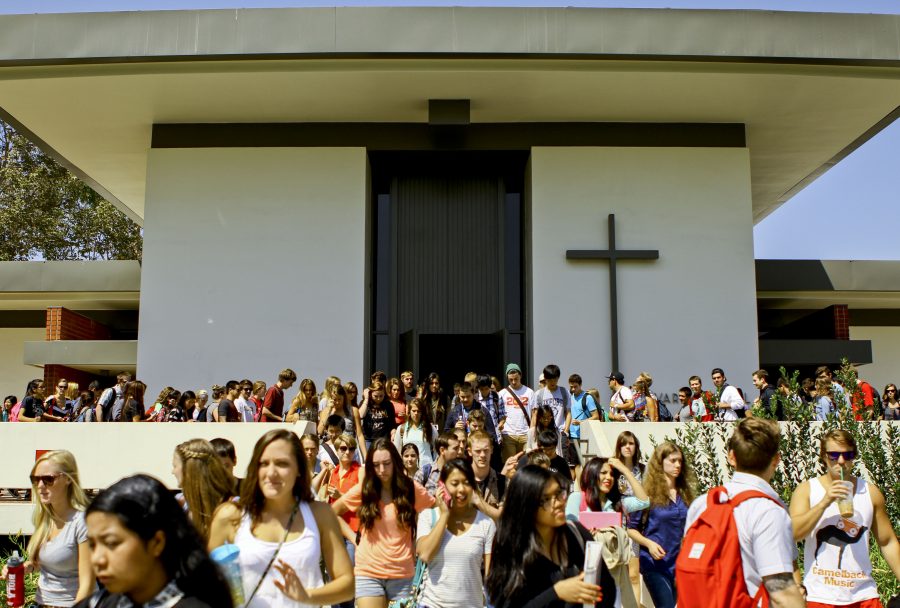Do you ever wonder at the origin of a slice of Caf pizza? Its grains alone have followed Bon Appétit regulations, being grown, collected, packaged, shipped, delivered, prepared and served directly to you. It has undergone an arduous journey to arrive where it is, pulsing with warm radiance on your plate and inviting you to partake in its bounty. You reflect upon this as you sprinkle some chili peppers onto its oozing, cheese surface.
And then you eat.
The Caf uses about 60 to 70 thousand dollars of food a week and receives shipments five or six days a week, with approximately 20 percent of its ingredients coming from local sources. Generally, the Caf orders from a menu two days prior to the meal reaching the student’s plate, with preparation occurring the day before serving.
undergoing some evaluation
“What we’re looking for on this end is quality product that is useable, it’s not going to perish too fast on us,” said Steve Rall, general manager for Bon Appétit. “We’re not buying produce that’s only good today.”
While in transport, the food undergoes some evaluation, including the moving truck being checked for cleanliness and temperature. After the food arrives to the Caf, it receives a date which allows for better identification of old products. Executive chef Mohamed Boussaksou also instructs his staff to inspect food for unwanted components.
“We try to control as much as we can. We try to educate our staff to inspect every product that we serve and sometimes stuff… happens and it’s out of our control. We always welcome feedback from the clients. If they find something that’s not normal in our food that we missed, then we can address it right away,” Boussaksou said.
Despite this process of quality control, bugs have slipped the radar in the past. For instance, a health inspector recently visited the Caf after a student found a worm in their salad, though the inspector determined there was nothing of concern, according to Rall. Cafe manager Vincent Hawkins believes the incident needs to be taken in the context of the Caf’s large scale operation, which serves about one million meals a year.
“we do our best”
“The amount of meals that come out of here, we have an incident where an insect or something’s gone out on a piece of lettuce, it should be kept in perspective of all the big picture that’s―we do our best,” Hawkins said.
Regardless of any hiccups in the meal’s journey, the food undergoes preparation and goes into storage, depending on the type. For instance, Caf workers prepare dough for over 100 pizzas daily. The dough can remain in storage for up to 48 hours, though it bakes with the shredded cheese received through daily shipments.
Once completed, the aromatic pizzas lie ready for eating. At each stage workers have handled them with care to ensure they reach their final destination in the student’s gaping maw. In addition, thanks to the Caf’s new involvement in a food recovery program, the meals can extend their journey to local charities and food banks.
“We take our food service program and build it around the client. The number one client here is the student. They’re the ones that come in, they’re the ones with the fee… and this is their home,” Rall said.








